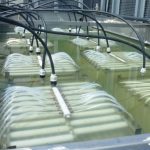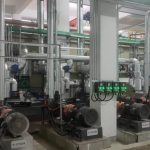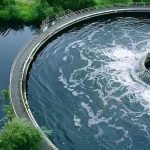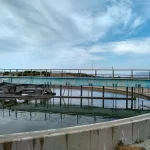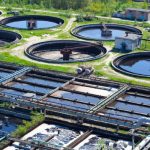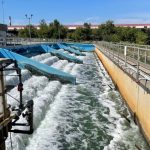-
-
Call for inquiry
-
B-21, Block-2, Gulshan-e-Iqbal
Karachi, Pakistan

Rainwater Harvesting: A Sustainable Solution for Water Security in Urban Pakistan
Introduction
Water is one of the most valuable resources on Earth, yet it is often taken for granted. In countries like Pakistan, where water scarcity is a growing threat, this issue becomes even more urgent. According to the Pakistan Council of Research in Water Resources (PCRWR), the country could face absolute water scarcity by 2025 if immediate action is not taken.
Cities like Karachi already struggle with severe water shortages, tanker mafia reliance, and urban flooding during monsoon rains. In such an environment, Rainwater Harvesting (RWH) offers a practical, sustainable, and eco-friendly solution.
By capturing and storing rainwater, households, industries, and communities can reduce dependence on municipal water supplies, cut costs, and build resilience against climate change.
What is Rainwater Harvesting?
Rainwater harvesting is the process of collecting and storing rainwater for later use. Instead of letting rainfall flow into drains or cause flooding in Karachi’s streets, it can be redirected into storage tanks or groundwater recharge systems.
Importantly, the harvested water can be stored after a preliminary sedimentation treatment — a process where heavier particles settle at the bottom of the tank. Once treated, this water can be used for:
- Household needs (washing, cleaning, gardening, toilet flushing).
- Agricultural irrigation, especially in dry seasons.
- Industrial processes like cooling, cleaning, and processing.
- With advanced treatment — even drinking.
Why Rainwater Harvesting is Important in Pakistan
1. Conservation of Freshwater Reduce over-reliance on groundwater and tanker supplies that dominate Karachi’s water economy.
2. Flood & Erosion Control Rainwater harvesting systems lower urban flooding risks, one of the biggest issues during Karachi’s monsoon.
3. Cost Savings Using stored rainwater reduces monthly water bills and dependency on costly tankers.
4. Environmental Protection Helps maintain ecological balance by reducing groundwater extraction.
5. Climate Resilience Acts as a backup water source in times of irregular rainfall or prolonged drought.
In short: Rainwater harvesting is a direct answer to “Why is this important for me?”— it ensures water availability, cuts costs, and provides long-term security.
Common Methods of Rainwater Harvesting
- Rooftop Harvesting: Collecting rainwater from rooftops into tanks or recharge pits.
- Surface Runoff Harvesting: Capturing rainwater from roads, open fields, and paved areas.
- Recharge Pits and Trenches: Directing water underground to replenish aquifers.
- Percolation Tanks & Check Dams: Larger, community-based structures to store rainwater for gradual use.
In Karachi’s urban setting, rooftop harvesting is the most practical for homes, while surface runoff systems can help reduce street flooding.
Who to Approach for Installation in Pakistan
Incorporating a rainwater harvesting system requires knowledgeable design and professional setup. Here’s who you should consult:
- Environmental Experts – Engineers and NGOs specializing in water conservation and rainwater harvesting in Pakistan.
- Local Builders & Architects – Many modern green building projects in Karachi now include built-in RWH systems.
- Government & NGOs – Some community projects provide guidance and partial funding for rainwater harvesting.
Tip: Avoid DIY setups without professional advice — improper design may lead to contamination or system failure.
Future of Rainwater Harvesting in Pakistan
As Pakistan faces water scarcity and climate change, RWH will play a critical role in national water strategies. Future trends include:
- Smart Monitoring Systems – Sensors to track storage levels and optimize use.
- Policy Mandates – Making RWH mandatory in housing societies, factories, and commercial complexes.
- Community-Based Solutions – Combining traditional water storage with modern technology.
- Green Architecture – Designing cities and buildings with integrated rainwater systems.
Conclusion
Rainwater harvesting is not just a traditional practice — it is a modern necessity for Pakistan. By capturing rainfall, we can reduce flooding in Karachi, conserve water, and create sustainable solutions for homes, factories, and entire cities.
Whether you’re a homeowner tired of water shortages, a farmer saving crops in dry seasons, or a factory owner cutting costs, rainwater harvesting is the answer.
The first step: Consult experts with prior knowledge and experience in rainwater harvesting systems — and make water security a permanent part of your life.


